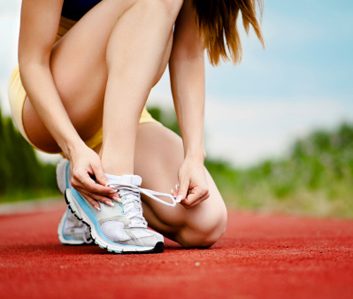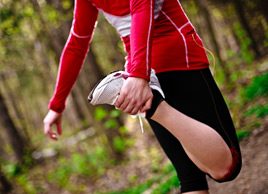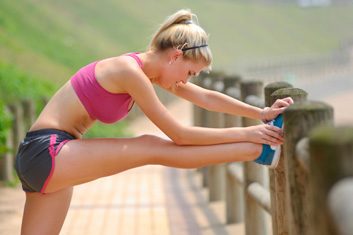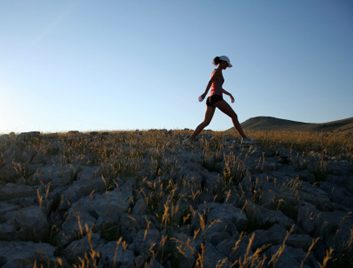
Wearing worn-out shoes
The cushioning properties of even the best sports shoes break down with use. This can lead to discomfort and eventually injury, especially if you’re overweight. There’s no mystery to knowing when it’s time for a new shoe; if you see worn areas on the soles, it’s time to get yourself a new pair. To get the best fit, shop in the afternoon when your feet are biggest, wear the socks you’ll be walking in, make sure there’s a little space between your big toe and the end of the shoe, and walk around the store to be sure the heel doesn’t slip.

Walking without warming up
Most people don’t think of walking as a strenuous activity, but if you spend most of your day sitting at a desk, then you’re asking your body to spring out of the blocks. Before you start, you need to elevate your core body temperature, get the blood and oxygen flowing to the muscles, and lubricate your joints. Take 3 minutes to do slow ankle, hip and arm circles (not all at once!) and you’ll be ready to roll.

Using poor technique
Overstriding, foot-slapping, head-hanging, chicken-winging – these are just a few of the common flaws that can lead to injury. Remember to square up your posture, swing your arms bent at 90 degrees close to your body, push off evenly (heel to midfoot to toes) with every step and maintain an even stride, no matter how fast or slow you’re walking.

Not stretching afterward
Most new walkers forgo cool-downs. But just as muscles and tendons need to ease into an activity, they also need to ease out. Otherwise, they can get tight and cramp. The older you get, the more important it is to stretch after being active.
Take 3 minutes to do slow standing lunges. Gently bend at the waist with slightly flexed knees and stretch your bent arms overhead, as if you’re scratching the top of your back.

Not setting specific goals
As with everything else in life, if your goals aren’t clear, realistic and measurable, it’s unlikely you’ll reach them. Measure your success in steps. Use a pedometer all day, every day. Find ways to add 10 to 20 percent more steps each week until you reach 10,000 steps a day. Your body will continue to reset itself to its increased capacity and you’ll actually crave the benefits this amount of movement provides.
Related:
• 6 essential cool-down stretches
• 4 ways to burn more calories when walking
• The fitness benefits of nordic walking
